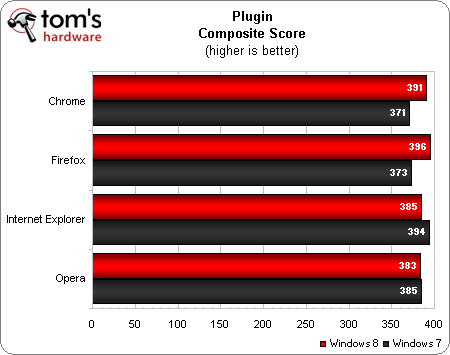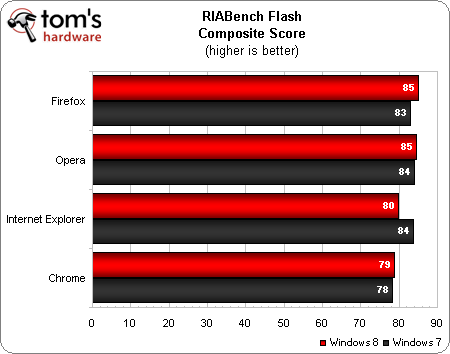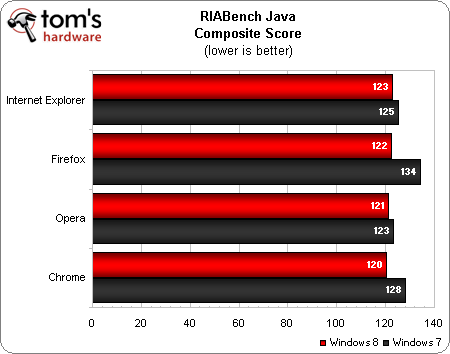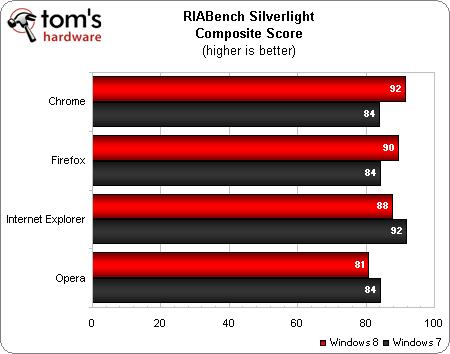Which Web Browser Is Best Under Windows 8?
Welcome to our first-ever Web Browser Grand Prix on Windows 8! Will Chrome remain the reigning Windows champion? Is Internet Explorer 10 going to smash the competition like its predecessor? Does Opera 12.10 finally deliver on what version 12 promised?
Plug-In Performance
Plug-In Composite Score
This time around, we decided to create a composite score from all three major browser plug-ins: Flash, Java, and Silverlight. This gives us a picture of how much, or rather, how little, browsers actually factor into plug-in performance, as well as decreasing the weight of these plu-ins in our final score.
All of the plug-in scores are within about five percent of each other, and we've seen the winners change regularly in all three plug-in tests, but never beyond 5%. Therefore, this will also be the last time we test plug-in performance in the Web Browser Grand Prix. With the exception of Chrome's baked-in Flash player, every other combination of browser and plug-in yields essentially the same results.
Flash
The Flash composite score is derived from the geometric mean of the ten RIABench Flash sub-tests.
As usual, Chrome's built-in Flash player cannot match the Adobe version used by other browsers. Flash performance in IE10 is roughly comparable to Chrome, while Firefox and Opera are slightly ahead.
Java
Get Tom's Hardware's best news and in-depth reviews, straight to your inbox.
The Java composite score is the geometric mean of all seven RIABench Java sub-tests.
All four browsers perform Java tests equally well under Windows 8, while Firefox and Chrome show a minor advantage under Windows 7.
Silverlight
Our Silverlight composite score is comprised of the geometric mean of all ten RIABench Silverlight sub-test results.
The Silverlight scores are essentially another dead heat, with Opera displaying a slight performance dip under Windows 8 and, believe it or not, IE9 showing a minor advantage in Windows 7.
Drill Downs
The charts below contain the individual RIABench Flash, Java, and Silverlight scores for Windows 8 and Windows 7.
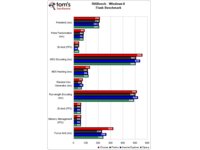
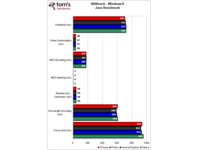
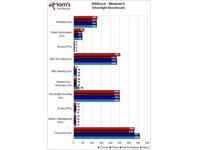
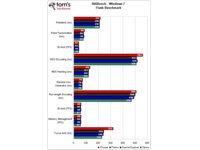
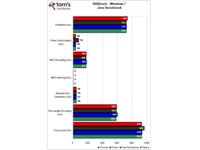

More aberrations occur in Flash and Silverlight than in Java, but they are still too minor to draw any sweeping generalizations. Any differentiation in the Flash scores is due to Chrome using a different version than the other three browsers.
Current page: Plug-In Performance
Prev Page Hardware Acceleration Performance Next Page Memory Efficiency